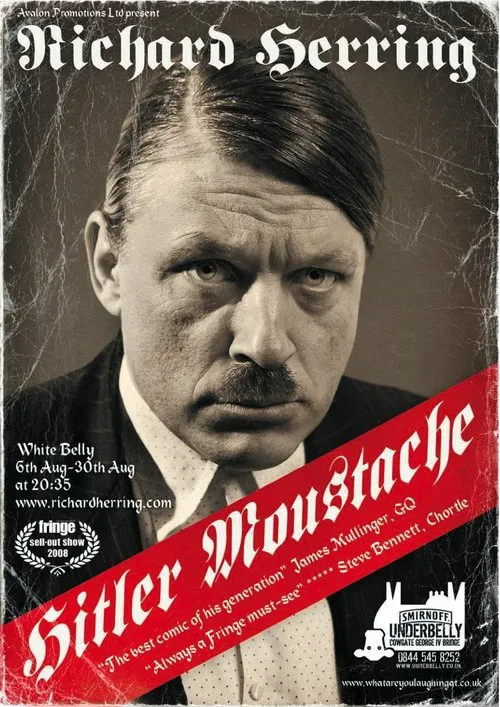Richard Herring: Hitler Moustache

Plot
In "Hitler Moustache," comedian Richard Herring embarks on a quest to reclaim what he perceives as a hijacked facial feature: the toothbrush moustache. This iconic style, once donned by Charlie Chaplin, has fallen into disrepute due to Adolf Hitler's infamous association with it. Herring is determined to understand how people react to the moustache on his face, and if he can use it as a tool for comedy. The film begins with Herring growing a toothbrush moustache, deliberately evoking the image of Hitler. He takes to the streets, visiting various public places, such as cafes, parks, and bus stops. Throughout his journey, he encounters a range of reactions, from shock and disgust to amusement and curiosity. At a coffee shop, Herring meets a young woman who is taken aback by his moustache. She candidly expresses her discomfort, feeling that the style reminds her of the dictator. In other cases, people politely laugh or make light of the situation, often trying to avoid confrontation. However, some individuals take a more antagonistic stance, asking blunt questions or making snide remarks about Hitler and Nazism. Herring navigates these interactions with a mix of curiosity, humor, and self-reflection. He grapples with the symbolism attached to the moustache, weighing the impact of Hitler's association on the style's perception. As he interacts with people from diverse backgrounds, he notices that reactions vary greatly, often depending on age, cultural context, and individual experiences. One poignant encounter occurs with an elderly German woman who recalls the trauma of living under Nazi rule. She is visibly moved by Herring's moustache, as it brings to the surface painful memories of a tumultuous past. In a striking moment of vulnerability, she opens up about the emotional scars inflicted by the regime, which have left a lasting impact on her and her community. Through these diverse interactions, Herring uncovers a complex web of emotions and associations tied to the toothbrush moustache. He starts to question whether it is possible to separate the style from its unsavory historical connotations. As he struggles with the moral implications of wearing the moustache, he begins to see it as a mirror of society's attitudes and fears. The film takes an introspective turn, with Herring pondering the role of comedy in addressing sensitive topics. He acknowledges the power of satire to challenge and provoke, but also recognizes the risks of using a style associated with one of history's most notorious figures. As he grapples with the ethics of his experiment, Herring begins to realize that reclaiming the toothbrush moustache is not simply a matter of personal expression but also a reflection of society's values. Ultimately, "Hitler Moustache" is a thought-provoking exploration of the interplay between history, culture, and personal expression. Through Herring's unbridled curiosity and determination, the film highlights the complexities of representation, identity, and the power of comedy to confront and challenge our perceptions. By navigating this treacherous terrain, Herring offers a nuanced commentary on the toothbrush moustache, revealing it to be a symbol both of creative expression and historical trauma.
Reviews
Recommendations


